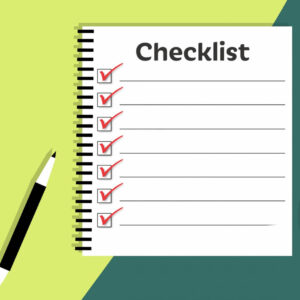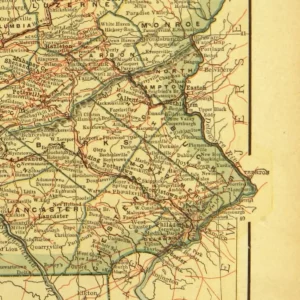
When someone sees your website, storefront, advertisement, or booth at a trade show, they embark on a journey. Like any journey, they have an objective and a sense of how to navigate the landscape to satisfy that objective. As businesses and organizations, that desired end-point is a conversion such as a purchase or signup. As curators of that journey, it is our responsibility to make the process simple, intuitive, and rewarding.
Technically speaking, a customer journey refers to the complete set of interactions and experiences a customer has with a company. The process begins with initial awareness and consideration and ends with purchase and post-purchase activities. It includes all touch points where the customer comes into contact with your company or organization, such as marketing, sales, customer service, and support. Understanding this journey is crucial for businesses to provide a seamless and positive experience for their customers, ultimately increasing their satisfaction, loyalty, and retention.
What We'll Cover
The components
Let’s start by breaking down the customer journey into its components. Each of these can be built out either on paper or in practice to align with your business and market.
- The visitor / the customer. This can be anyone who’s found you via any marketing channels you’ve set up. This is likely not a single type of person. Look at multiple personas, or types of visitors who you want to see become customers. What are their needs? What are they looking for? Why are they here?
- The touch-points. These are the actions they take as they navigate your presence online (or even in person). Buttons, forms, or other interactive elements count towards touch points. This can be a sequence of web pages, links within a page, or even their movement across sites.
- Takeaways. These comprise the growing body of knowledge your visitor acquires as they navigate your site, social media, or other marketing material.
While not a component of the customer journey, consider also key performance indicators (KPIs). These are measurements by which you can say with certainty that your improvements are working for you. Create KPIs relevant to the customer, the touch-points, and the takeaways.
Why even view this as a “journey”?
A pleasant customer experience is about much more than improving product ratings or decreasing wait times. It involves understanding what customers experience from the moment they begin considering a purchase and then working to make the journey toward buying a product or service as simple, clear, and efficient as possible. It’s not just about individual interactions (such as customer service calls), but also about the overall experience across touch-points. When customers are satisfied with their experience, they tend to become more loyal and are likely to promote the company among friends.
Curating the online journey
The “online” customer journey is the process someone goes through from the landing page up to the point of sale. It includes multiple stages such as awareness, consideration, and decision-making. Curating the journey involves designing the website’s interface, user experience, and content such it guides the visitor towards a sale or signup. The goal is to have a seamless and engaging web experience for the visitor, converting them into a customer.
Not every visitor has the same expectations or brand familiarity. It is important to consider the customer journey when designing a website. This helps ensure the website is designed in a way that meets the needs of your target audiences. By understanding the different stages of the customer journey, you can effectively guide users through the process of discovering, learning about, and ultimately purchasing a product or service. This can also help to increase conversions and improve overall customer satisfaction.
Pre-planning with a focus on the journey
Before you map the customer journey, as it is today and how you want it to be, start with the following actions:
- Identifying pain points, opportunities, and touchpoints.
- Conducting customer research and collecting feedback to gain insight into customer needs and preferences.
- Analyzing website analytics data to identify areas for improvement and optimization.
- Developing user personas to understand the needs, behaviors, and motivations of different customer segments.
- Creating a content strategy that aligns with the customer journey and provides value to customers at each stage.
Doing these things can yield a better understanding of customers and the journey they take when interacting with their brand online. This will also help ensure the website design and user experience is tailored to meet the needs of customers, and ultimately lead to increased engagement, conversions, and loyalty.





